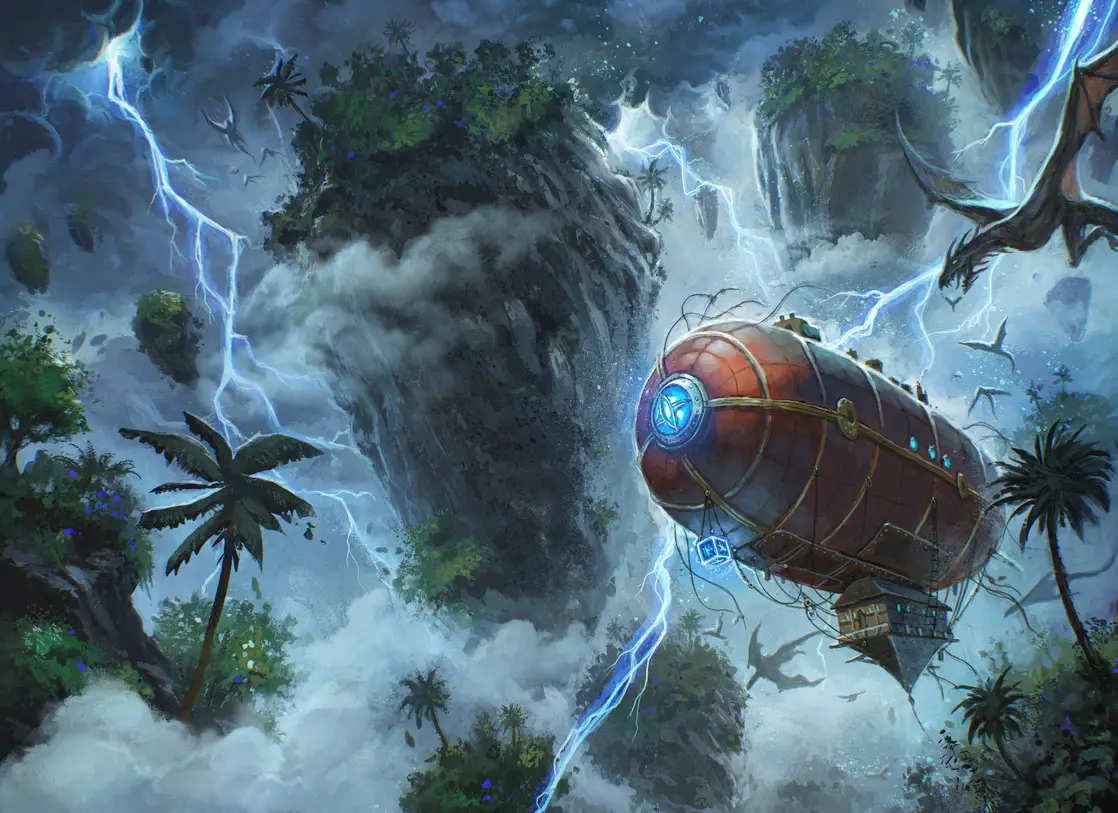For over a decade, TTRPG community fans often debated whether they preferred Dungeons and Dragons or Pathfinder. These two games are the leading TTRPGs on the marketplace, although publishers are striving to create their competitors. Whether it is Kobold Press’ Tales of the Valiant, MCDM’s Draw Steel, or Darrington Press’ Daggerheart, fantasy-themed game fans will have plenty of options.
A newer addition to the marketplace is MythCraft, a TTRPG published by Grant Mielke, the owner of QuasiReal Publishing and the host of The Homebrew. The game was funded on Kickstarter years ago but is raising funds on Backerkit for a reprint, VTT support, and the sale of new resources. At first glance, the game appears like yet another fantasy alternative. However, the game brings a unique mixture of Pathfinder’s crunchiness and D&D’s simplicity into a game system that players may find enticing if they want to break away from WOTC’s monopolistic market control.
The author received a chance to speak with staff at PAX Unplugged about the game. They also received a complimentary review copy of MythCraft’s Core Rulebook.

Character Creation:
At first glance, the game will feel quite similar. Players choose a preferred lineage, assign stats, determine a background and profession, and choose appropriate talents. Many character lineages are your standard fantasy bread-and-butter options, such as elves, dwarves, and dragonborn. There are also new options like the canine-esque Hondu, the mechanistic Raedeen, and the ursine Urkou.
Backgrounds are chosen but can be updated with various “ranks” to give them better bonuses or increased relevance to a player’s character. Occupations draw inspiration from Warhammer’s class system, where players adopt a relevant profession and relevant skills and equipment. It’s not the central aspect of a character but it provides a significant amount of viable skills and flavors to gameplay.
Finally, there are character classes, which all appear to be varying flavors of traditional Pathfinder classes. Whether you wish to be a wise mage, a fist-throwing pugilist, a celestial-touched vessel, or an occultic witch, players will adopt talents relevant to the class to improve and customize the class. Players don’t have subclasses but “Tracks,” which are a collection of pertinent talents that capture a particular character’s playstyle. For example, the Cleric has tracks for Exorcism, Piety, and Theology. It also has talents related to icons and ambitions. Some talents may differ in content, while others may just upgrade stats and abilities of the player as they go.
The talent trees are relatively extensive, providing some appeal to those who enjoy the character creation complexities of games like Diablo 4 or Path of Exile 2. Each class has a lengthy list of talents and a skill tree that shows how each ability interacts and can update upon one another. But I will admit that seeing the long list of talents is overwhelming at first glance.
Actual Play:
The gameplay feels similar to 5e at face value. Players will have seven attributes and varying levels of mastery in one of nearly 100 skills. These include things like arcana and appraisal and specialized crafting skills like brewing or calligraphy. Some of those skills might be connected to others. For example, a person’s mastery of acrobatics will affect whether they can contort their body to fit into a small space. These stats are affected by your chosen talents and background and are upgraded as the player levels up.
As for combat, this is one of the elements that QuasiReal tries to hold up as the best part. Players start with three action points (although this can be modified by a player’s Coordination, or COR, stat.) Players can spend up to all of their AP to perform various actions and save others as “reactive actions.” The actions vary in style, from weapon attacks to spells to maneuvers. Spells don’t track levels or slots, but are based on how many “spell points” a player wants to use. They spend X amount of SP to cast the base level of magic, and additional SP to upcast it. Magic is also based on five “sources” of magic, meaning they interact in particular ways. For example, divine magic may affect occult magic that it wouldn’t on arcane magic. There’s an element of Pokemon’s elemental interactions incorporated into gameplay.

Why play this over D&D?
One of the questions that has stuck in my brain around is why someone would play a game like Mythcraft over D&D or Pathfinder. While there is a player group who still remembers the OGL debacle and wants nothing to do with the Wizards of the Coast publisher, the vast majority of players are fond of 5e and the latest updates of the rules.
One of the most significant selling points that Mythcraft’s team presented was the comprehensive world. While the current game resembles standard fantasy tropes, the team told The Fandamentals that they’re working on expanding into many other periods in the world with future books. For example, they are working on adapting the mechanics and rules to fit a Mad Max Post-Apocalyptic setting, a futuristic sci-fi setting, and others. One of their earlier Kickstarter releases was Veil of the Eternal Night, a Dracula-focused TTRPG experience that offers a comprehensive leveling experience for 5e and Mythcraft players in a gothic setting that will seem familiar to Castlevania fans. The new reprint also contains much supplemental material that may give players insights into the unique world storytellers have developed.
The other aspect is to improve character creation as a whole. The goal, Mythcraft’s team emphasized, is to have no “dead levels” where players barely change. Instead, they want to offer players the ability to customize their characters to their heart’s delight with every level up but avoid excess crunchiness in how that’s done. Character creation isn’t set in stone, allowing options and flexibility for players.
Gameplay is also quite simple. Players have X number of action points and can use them as they wish. It may seem like a flavored version of D&D’s action/bonus action/movement mechanics, but it theoretically offers more flexibility to players, the team said.
Conclusion: Mythcraft is yet another entry in the race to become the next D&D alternative. The authors show an evident love for TTRPGs and have a character-building system that may seem daunting at first glance but contains a lot of extensive character tree creation options for players wanting something with D&D flavors without learning anything too complex. The long lists of talents and skills may appear daunting to most players at first, but there is something intuitive about the game once you get into the nitty-gritty.
Mythcraft TTRPG Enhanced is currently available for crowdfunding on Backerkit. The campaign funds a newly updated version of the core books and new supplemental zines, as well as VTT support on Foundry and Roll20.
Images Courtesy of QuasiReal Publishing
Have strong thoughts about this piece you need to share? Or maybe there’s something else on your mind you’re wanting to talk about with fellow Fandomentals? Head on over to our Community server to join in the conversation!


